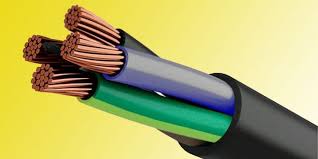
In today’s world of rapidly expanding power needs, the choice of cable technology plays a crucial role in ensuring safety, efficiency, and long-term reliability. The right cabling system can make a difference in minimizing energy losses, maintaining consistent performance, and reducing maintenance costs over time. Among the various cable types available, Low Tension Cross-Linked Polyethylene (LT XLPE) cables have become a preferred option in modern power distribution systems.
When it comes to durability, performance, and adaptability, LT XLPE Cables stand out as a superior solution for low-voltage power transmission and distribution. These cables are designed to operate efficiently under challenging conditions, offering high resistance to heat, moisture, and mechanical stress. With their enhanced insulation properties, they have become a go-to choice for industries, commercial buildings, and residential projects looking for reliable power connections.
What Are LT XLPE Cables?
LT XLPE cables are low-tension electrical cables insulated with cross-linked polyethylene material. The “cross-linking” process modifies the polyethylene molecular structure, improving its thermal, mechanical, and electrical properties. These cables are generally rated for voltages up to 1.1 kV and are used extensively in underground, overhead, and conduit installations.
Top Advantages of LT XLPE Cables in Power Systems
1. Superior Thermal Resistance
One of the primary benefits of LT XLPE cables is their high thermal endurance. While conventional PVC-insulated cables can typically handle temperatures up to 70°C, LT XLPE cables can operate continuously at 90°C and withstand short-circuit temperatures up to 250°C. This higher thermal limit allows for greater current-carrying capacity without compromising safety.
2. Enhanced Electrical Properties
LT XLPE insulation has a low dielectric constant and high insulation resistance. This reduces energy losses during power transmission, leading to better efficiency in power systems. The improved insulation also minimizes the risk of electrical leakage, ensuring long-term operational safety.
3. Excellent Mechanical Strength
The robust insulation structure of LT XLPE cables provides greater resistance to mechanical stresses such as impact, compression, and bending. This makes them suitable for installations in challenging environments, including underground and industrial sites where cables are exposed to rough handling.
4. Resistance to Moisture and Chemicals
One of the biggest issues in power cable longevity is exposure to moisture and corrosive chemicals. LT XLPE cables have excellent resistance to water ingress and are immune to many industrial chemicals. This makes them highly reliable for applications in humid or chemically active environments, such as factories and coastal areas.
5. Longer Service Life
The cross-linked polyethylene insulation is highly resistant to aging and degradation. LT XLPE cables can have a service life exceeding 30 years when installed and maintained properly, reducing replacement costs and downtime for power systems.
6. Lightweight and Easy Installation
Compared to many other types of insulated cables, LT XLPE cables are lighter in weight without compromising strength. This makes them easier to transport, handle, and install, reducing labor costs and project timelines.
7. Higher Current-Carrying Capacity
Due to their better heat resistance, LT XLPE cables can carry more current than equivalent PVC cables of the same size. This advantage allows for a more compact cable design while delivering the required electrical load efficiently.
8. Safety and Fire Resistance
While not completely fireproof, LT XLPE cables emit significantly less smoke and toxic gases compared to PVC cables during combustion. This is an important factor for installations in public buildings, industrial facilities, and residential complexes where safety is a priority.
9. Versatility of Applications
LT XLPE cables can be used in various applications including power distribution in residential buildings, industrial plants, commercial complexes, and utility networks. They are suitable for both indoor and outdoor use, in ducts, trays, underground installations, and even underwater in some cases.
10. Environmentally Friendly Option
LT XLPE insulation does not release harmful halogens when burned, making it a more eco-friendly option compared to traditional PVC-insulated cables. This feature is especially important in projects that aim to comply with green building certifications and environmental standards.
Applications of LT XLPE Cables
Because of these advantages, LT XLPE cables are widely used in:
- Residential and commercial electrical distribution systems
- Industrial power networks
- Utility substations and power plants
- Underground cabling for urban infrastructure
- Renewable energy projects such as solar and wind farms
Key Factors to Consider When Choosing LT XLPE Cables
While LT XLPE cables offer many benefits, selecting the right type for your project requires considering a few factors:
- Voltage Rating – Ensure the cable meets the required system voltage.
- Conductor Material – Copper or aluminum conductors have different performance characteristics.
- Installation Environment – Consider exposure to heat, moisture, and mechanical stress.
- Cable Size – Match the cable size to the current load requirements.
- Standards Compliance – Choose cables that meet international or local safety standards.
Maintenance and Care Tips for LT XLPE Cables
Although LT XLPE cables require minimal maintenance, following best practices can extend their service life:
- Inspect periodically for signs of wear or damage
- Keep joints and terminations sealed against moisture
- Avoid exceeding the rated load capacity
- Ensure proper earthing to prevent faults
- Replace damaged sections promptly to avoid system downtime
Final Thoughts
LT XLPE cables have transformed modern power systems by providing a safe, durable, and efficient solution for low-voltage electricity distribution. Their exceptional thermal resistance, mechanical strength, and electrical performance make them an ideal choice for a wide range of applications. Whether for residential, commercial, or industrial projects, investing in LT XLPE cables ensures long-term reliability, reduced energy losses, and better overall performance of your power system.
By understanding their advantages and selecting the right specifications, engineers, contractors, and homeowners can ensure they make the most of this advanced cabling technology for years to come.

